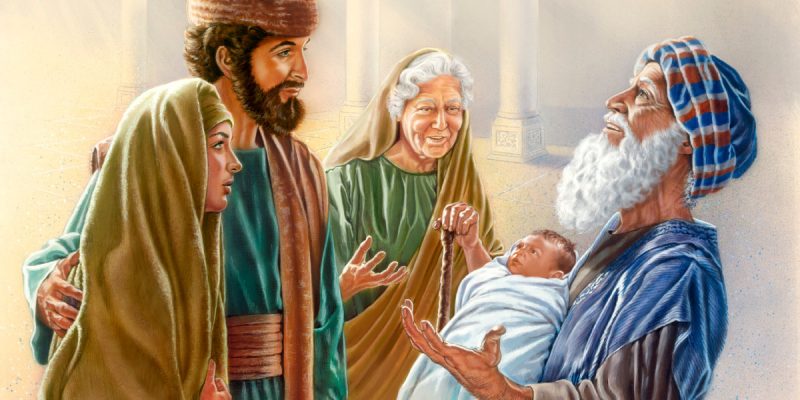One of the downsides of our liturgical calendar is everything seems to be squished together so we can complete the entirety of the celebration on time. These days, we start to celebrate Christmas before we have even finished with Advent, and as soon as the last present is opened on Christmas Day, the tree goes out on the curb, and the decorations are put away.
Most, if not all, our manger displays already have the Wise Men present, but biblical history tells us that Wise Men from the East visited Jesus more than two years after his birth. But we cannot wait for two years to sing “We Three Kings,” so we condense the story all down into one single night.
On this First Sunday after Christmas, we are only on the 3rd day of the festal celebration of the Birth of Jesus, but the story jumps ahead to forty days after his birth. Mary and Joseph have returned home to Nazareth, and they have begun the task of raising their son.
The Jewish Ritual Law required that parents present their children in the Temple forty days after their birth and make an offering to God for them. The law required the parents to offer an unblemished lamb, but if they could not afford that, they could offer two turtledoves or two young pigeons instead. This day will be celebrated around February 2nd as the Feast of Our Lord’s Presentation in the Temple.
So, Mary and Joseph brought Jesus to the Temple as the law required. He did not need to be purified, but they needed to fulfill the law. Mary and Joseph were not wealthy; in fact, they were probably relatively poor, so they offered their sacrifice of two turtle doves or two pigeons, Scripture is unclear. But Mary and Joseph also offered the unblemished lamb as a sacrifice; they presented Jesus, the Lamb of God, as their sacrifice.
Those of you who pray the daily office of evening prayer will be familiar with the next part of this Gospel passage for today. As the couple exits the Temple, they come upon a man called Simeon, who Scripture tells us is “Just and devout.” He has been waiting for the “consolation of Israel,” and Holy Spirit has revealed to him that he would not see death until he had seen the Christ.
But there is more to the story than an old man cradling a baby in his arms. As I often say, there is Scripture on the surface, and then there is the Scripture of the depths or the deep dive into what lies beneath the surface. Simeon represents all of humanity in his “waiting for the consolation of Israel.” Simeon speaks for the entire world as the old law is passing away and giving way to the new covenant in Christ Jesus.
The holy couple next encounters the Prophetess Anna, who is of “great age” and had not left the Temple, but “served God with fasting and prayers night and day.” Again, we must go more in-depth with this passage for Anna, like Simeon represents more than just herself. This meeting of Jesus and Anna is a sign that both men and women equally share the proclamation of Christ’s redemption of the world.
I think it is vital for us to understand not just the sequence of events but the importance of why Jesus did what he did. Jesus was Human and Divine, and as a human had to fulfill the law but not as one that is tied to the law. By emptying himself and assuming his human nature, he was subjecting himself to human development and expression.
Let us be like Simeon and Anna, who greeted the Child Jesus with great excitement and work diligently to proclaim to all the world that God loves each of us and offers us comfort in the storm.
Amen.

